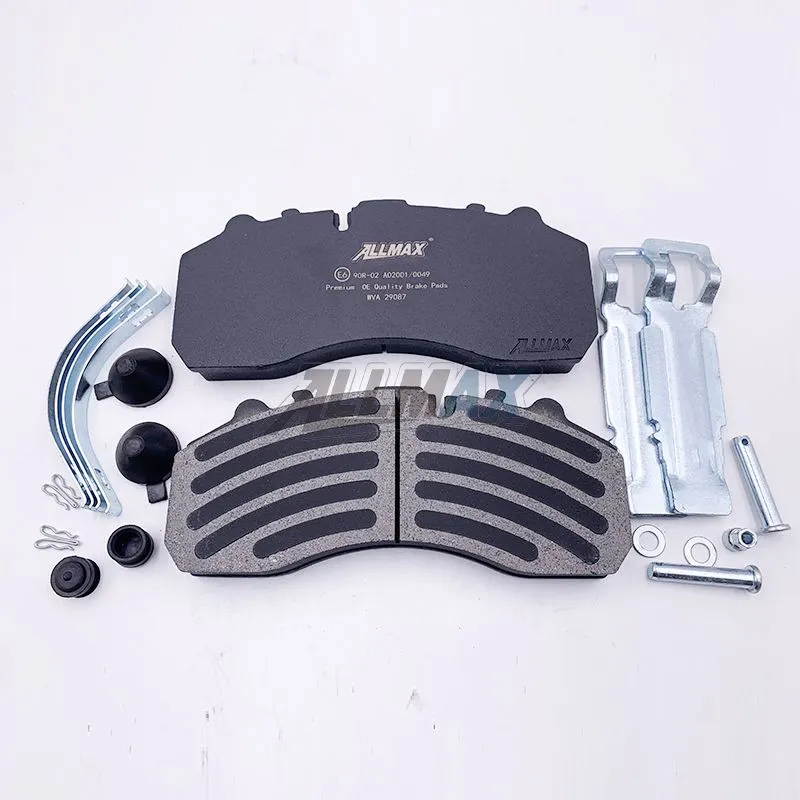Choosing the Right Brake Pads for Your Vehicle
When it comes to brake system performance, the choice of brake pads can make a significant difference. The debate between ceramic brake pads and OEM brake pads is a prevalent topic among automotive enthusiasts and regular drivers alike. In this comprehensive guide, we will delve into the specifics of each type, comparing their composition, performance, durability, cost, and overall impact on your vehicle. By understanding these differences, you can make an informed decision that best suits your driving needs.
Understanding Ceramic Brake Pads
Ceramic brake pads are crafted from a combination of ceramic fibers, bonding agents, nonferrous filler materials, and a small amount of metal. Introduced in the 1980s, ceramic brake pads have gained popularity due to their numerous benefits.

Composition and Characteristics
Ceramic brake pads are known for their lightweight composition and density similar to that of porcelain. The materials used in their construction allow for efficient heat dissipation and resistance to wear. This results in minimal dust production and quieter operation compared to other types of brake pads.
Performance and Benefits
One of the standout features of ceramic brake pads is their consistent performance under various driving conditions. They provide a smooth and stable braking experience with a high level of reliability. Key benefits include:
Quiet Operation: Ceramic brake pads produce less noise, which is ideal for urban and residential areas.
Reduced Brake Dust: These pads generate less dust, keeping your wheels cleaner for longer periods.
Longevity: Ceramic pads tend to last longer due to their durable nature, reducing the frequency of replacements.
Stable Performance: They maintain effective braking at high temperatures, making them suitable for both everyday driving and high-performance scenarios.
Understanding OEM Brake Pads
OEM brake pads are the brake pads that come standard with a new vehicle, designed and manufactured by the vehicle’s maker or an approved supplier. They are tailored to meet the specific requirements of the vehicle model.
Composition and Characteristics
OEM brake pads can be made from a variety of materials, including organic compounds, semi-metallic compounds, and even ceramic materials in some cases. The composition is chosen based on the vehicle’s design and intended use, ensuring optimal performance and safety.
Performance and Benefits
OEM brake pads are engineered to provide a balanced performance that meets the vehicle manufacturer’s standards. The key benefits of OEM brake pads include:
Compatibility: They are designed to fit perfectly with your vehicle’s brake system, ensuring optimal performance and safety.
Warranty Protection: Using OEM parts helps maintain the vehicle’s warranty, as they are approved by the manufacturer.
Reliability: OEM pads are tested and verified by the manufacturer, guaranteeing a certain level of performance.
Balanced Performance: These pads offer a good balance of braking power, durability, and noise levels.
Comparative Analysis: Ceramic Brake Pads vs. OEM Brake Pads
To make an informed choice between ceramic and OEM brake pads, it’s essential to compare their key features directly.
1. Performance and Braking Power
Ceramic Brake Pads:
Provide consistent and stable braking performance.
Perform well under high temperatures, making them suitable for various driving conditions.
Offer a quieter braking experience with minimal noise.
Ensure compatibility and reliable performance as per the vehicle’s design specifications.
Offer a balanced braking performance, suitable for the general driving needs of the vehicle model.
Performance can vary depending on the material composition (organic, semi-metallic, ceramic).
2. Durability and Wear
Ceramic Brake Pads:
Known for their long lifespan due to the durable materials used.
Generate less brake dust, contributing to cleaner wheels and less wear on the rotors.
Less prone to wear and tear, reducing the frequency of replacements.
OEM Brake Pads:
Designed for a specific vehicle model, ensuring balanced wear and tear.
Durability can vary based on the materials used (semi-metallic pads may wear faster than ceramic).
Typically provide a good balance between longevity and performance.
3. Noise and Dust Production
Ceramic Brake Pads:
Operate more quietly, producing minimal noise during braking.
Generate less brake dust, keeping wheels cleaner and reducing maintenance needs.
OEM Brake Pads:
Noise levels and dust production depend on the material composition (organic pads are quieter, semi-metallic may be noisier).
Generally designed to minimize noise and dust within the limits of the chosen material.
4. Cost and Value
Ceramic Brake Pads:
Tend to be more expensive upfront due to the high-quality materials used.
Offer better value in the long run with longer lifespan and reduced maintenance costs.
OEM Brake Pads:
Often more affordable initially, especially if purchased directly from the vehicle manufacturer.
Provide a good balance of cost and performance, maintaining vehicle warranty and reliability.
Choosing the Right Brake Pads for Your Vehicle
When deciding between ceramic and OEM brake pads, consider your driving style, vehicle type, and performance expectations. If you prioritize quiet operation, reduced dust, and long-term durability, ceramic brake pads might be the best choice. On the other hand, if you seek cost-effective, reliable performance that maintains manufacturer specifications, OEM brake pads are an excellent option.
Ceramic brake pads are ideal for drivers who experience heavy traffic and require consistent performance with minimal noise and dust. They are particularly beneficial for high-performance vehicles and those who want to reduce maintenance efforts.
OEM brake pads are perfect for drivers who prefer to stick with manufacturer-approved parts and need a balanced performance suitable for everyday driving conditions. They ensure that the vehicle’s warranty remains intact and provide peace of mind with their tested reliability.
Conclusion
Choosing between ceramic brake pads and OEM brake pads ultimately depends on your individual needs and preferences. Both options offer distinct advantages that cater to different driving conditions and expectations. By understanding their differences in composition, performance, durability, noise, dust production, and cost, you can make an informed decision that enhances your vehicle’s braking performance and overall driving experience.
- 0


